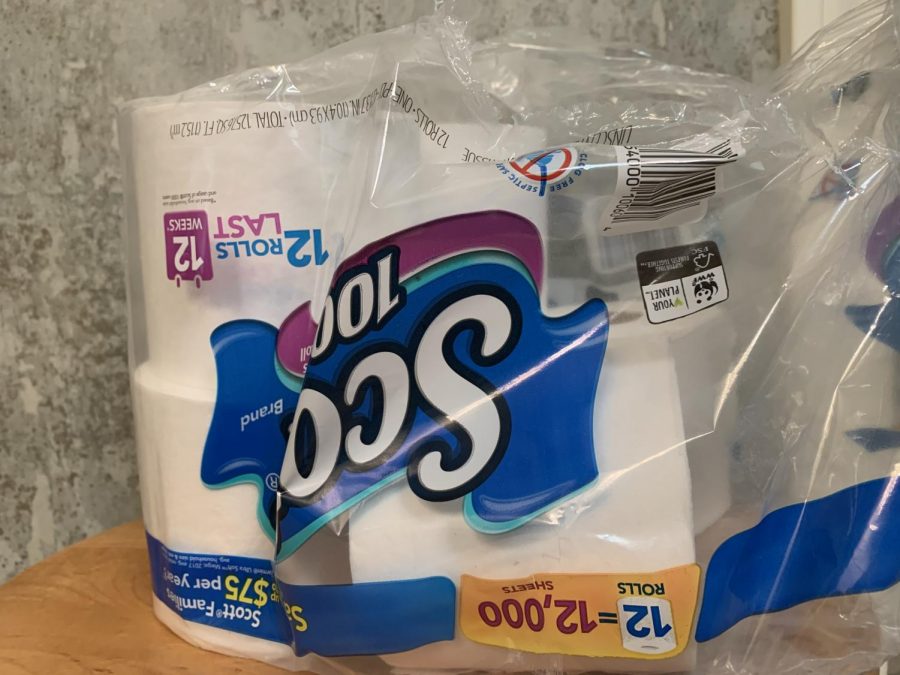Donations
The writer’s lesson from childhood informs her attitude toward giving in the time of Covid-19.
March 24, 2020
Marie Kondo has people around the world cleaning out closets and emptying bookshelves. As part of the purging process, cleaners ask themselves, “Does this item bring me joy?” I learned nearly fifty years ago about the ramifications for the giver and receiver when an item fails to meet this standard.
Mom lands a job as a Head Start assistant. It doesn’t pay as well as being an aide at the hospital but the hours work with raising four kids as a single mom. She worries about leaving the house before we leave for school but we learn how to set our alarms and make toast for breakfast. It doesn’t take long before we are set in a routine.
As the holidays approach, Mom requests we go through our toys to donate to “her Head Start kids” for the Christmas celebration. I look through my limited options, select a few no longer loved, and promptly give them to Mom.
A perk of Mom’s job is we get to attend the Christmas show where the preschoolers will sing. Their artwork will be displayed, and “Santa” will show up with actual gifts. As a third-grader, I am in the hazy phase of Santa believing, but a gift is a gift.
I can hardly contain my energy and optimism (a word of the week in Miss Peterson’s third-grade class). This could be a really good gift. I mean I could get a really great one. One that I didn’t even know I needed kind of gift. Maybe a Spirograph or spinning art wheel or an Easy Bake Oven with lots of cake mixes tossed in, or wait …maybe, just maybe….a suntan Barbie. The real kind. Not the cheap, knock-off grocery store dolls.
Mom makes sure we have our Sunday best on when we leave for the Christmas celebration. Mom looks pretty in her mini skirt and her beehive teased to perfection, sprayed in place with plenty of Aqua Net.
My optimism continues.
Upon arriving, Mom gets to work organizing her cherubs and talking to their parents. I sit in the bleachers of the small gym casing the joint. Typical decorations. Christmas trees, reindeer, lights, and a nativity scene. I make out the gifts hidden behind the trees. There aren’t very many of them. The true gifts must be hidden. They are that valuable.
The performance includes the songs of the season with children coming on and off the stage. No kids throw a fit, throw things, or throw up.
The end of the program brings the sound of bells, not church bells, but sleigh bells. The real kind. My attention (another word of the week in Miss Peterson’s class) focuses on the stage as a guy dressed up like Santa arrives with a “Ho Ho Ho.”
He has the goods.
As the little kids squeal to get in line, I calmly case the area. I know if I stay quietly in line I will increase my odds of receiving the special gift. The guy in the Santa suit will be able to see I am one of the good kids – one of the kids who behaves – most of the time. After all, good kids get rewarded, or at least that’s what my catechism teacher tells me.
I approach the guy in the Santa suit after many minutes of waiting. My heart is pounding. This is going to be a magical night.
I smile at the guy in the Santa suit.
The guy in the Santa suit smiles back.
He reaches into the sack and hands me a gift. It is a stuffed animal. A used tiger. An ugly tiger. It isn’t a loved donation. It is a “get this out of the house and dump it on some poor kid” donation.
I am crushed. There will be no Spirograph, no Spinning Art Wheel, no Easy Bake Oven with extra mixes, and absolutely, positively no suntan Barbie.
I am stuck with a second-hand stuffed tiger with matted fur.
The ugly stuffed tiger deserves a major pouting session. Forget about being on the good kid list! I pout all the way home. I am really good at pouting.
The rest of Christmas 1970 is uneventful (word on my weekly spelling list).
Seasons and routines repeat themselves and in early December my mom once again asks for toy donations for the Head Start celebration. Digging through my limited stash, I find the ugly stuffed tiger in the back of my closet. I toss him into the pile of donations, relieved to get it out of my life.
I just know this year’s exchange is going to be better. It has to be. I have hope. I have faith. I have optimism.
We are back in our Sunday best when Mom leaves us in the bleachers to care for her Head Start kids. Casing the joint as a fourth-grader, I consider a different approach to increasing my odds with the guy in the Santa suit. Instead of patiently waiting in line this year, I get in the front, or as near to the front as I can, without decking a four-year-old. I move away from my brother and sisters to be closer to the action.
The performance starts.
The performance ends.
The guy in the red suit comes out to the bells.
The four and five-year-olds scream.
I take a deep breath and start moving in. I smile at the guy in the Santa suit.
He smiles at me, reaches into his sack and hands me a used stuffed animal. It is a tiger. It is ugly. It is not a loved donation.
It is my donation.
What I learned nearly fifty years ago echoes through to the COVID-19 crisis of today. With people hoarding toilet paper, rice, and hand sanitizer in a rush to take care of themselves, we cannot forget about others who do not have the privilege of building a stockpile. It’s vital to consider our donations – not just material – but emotional and spiritual as our offerings of hope.














James Davis • Mar 24, 2020 at 11:50 am
Lovely work, kid! And 34th year? I had forgotten you were certified a year after that 2nd tiger hunt!
Tyger, tyger, burning bright….